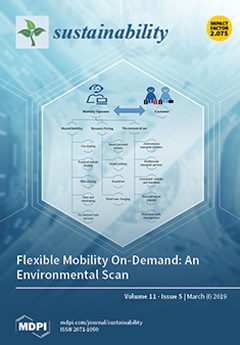We are no longer updating the Research Digest. All content remains.
The Permaculture Research Digest has summaries of newly published permaculture-related research. All items are
hyper-linked to the original publication.
The 'January 2013' archive contains 60 items published in 2012.
Items marked with a # have restricted public access, although abstracts are freely available.
Permaculture Research Digest
Tuesday 30 April 2019
Roe Morrow; Growing permaculture (video)
Rosemary Morrow "What is Needed for Permaculture to Grow"
Roe Morrow talks about her 40 years working in permaculture and considers where we're going next. International Permaculture Conference, London, 2015.
German permaculture as community of practice (journal)
The German Permaculture Community from a Community of Practice Perspective
Authors use the concept of Communities of Practice to answer important questions concerning community dynamics and learning processes: How are individual perspectives turned into a joint endeavour? How do the community and its respective relation to its members affect the interactions with external actors? Drawing on qualitative data from twelve semi-structured interviews with teachers from Germany’s Permakultur Akademie, our goal was to gain insights into the community’s self-organisation and learning interfaces. Findings suggest that the German permaculture community displays key characteristics of a Community of Practice with developed shared values as well as education and organisational structures, while being embedded in an international community. Internal challenges were the absence of a common strategy that effectively linked individuals to coordinated activities
Characteristics of permaculture farms (#journal)
Permaculture farmers consistently cultivate perennials, crop diversity, landscape heterogeneity and nature conservation
This study characterized plant communities on ten applied permaculture farms and found that independent adopters consistently implemented predominately perennial species (73% of species richness), polycultures (mean 42 crop species per site), and zone design. These practices resulted in commercial farms characterized by perennialization, crop diversification, landscape heterogeneity and nature conservation. Grassroots adopters were remarkably consistent in their interpretation and application of an unregulated agricultural model suggesting that such movements may exert considerable influence over local agroecological transitions.
100 solutions to global warming (video)
100 solution to reverse global warming
What if we took out more greenhouse gases than we put into the atmosphere? This hypothetical scenario, known as "drawdown," is our only hope of averting climate disaster, says strategist Chad Frischmann. In a forward-thinking talk, he shares solutions to climate change that exist today -- conventional tactics like the use of renewable energy and better land management as well as some lesser-known approaches, like changes to food production, better family planning and the education of girls. Learn more about how we can reverse global warming and create a world where regeneration, not destruction, is the rule.
What if we took out more greenhouse gases than we put into the atmosphere? This hypothetical scenario, known as "drawdown," is our only hope of averting climate disaster, says strategist Chad Frischmann. In a forward-thinking talk, he shares solutions to climate change that exist today -- conventional tactics like the use of renewable energy and better land management as well as some lesser-known approaches, like changes to food production, better family planning and the education of girls. Learn more about how we can reverse global warming and create a world where regeneration, not destruction, is the rule.
Plant choice changes soil long-term (journal)
Single introductions of soil biota and plants generate long‐term legacies in soil and plant community assembly
Centuries‐old man‐made legacies in the landscape still strongly influence present‐day nutrient cycling, plant productivity and species composition in natural ecosystems. For instance, long‐term human soil cultivation led to ‘Dark Earths’ around the world, supporting fungal‐dominated soil communities that still affect productivity and plant species composition centuries later. This paper demonstrates experimentally that one‐time additions of soil biota and plant seeds alter soil‐borne nematode and plant community composition in semi‐natural grassland for 20 years. Over time, above ground and below ground community composition became increasingly correlated, suggesting an increasing connectedness of soil biota and plants. Authors conclude that the initial composition of not only plant communities, but also soil communities has a long‐lasting impact on the trajectory of community assembly.
Soil microbe that eats methane (journal)
Widespread soil bacterium that oxidizes atmospheric methane
The global atmospheric level of methane (CH4), the second most important greenhouse gas, is currently increasing by ∼10 million tons per year. Microbial oxidation in unsaturated soils is the only known biological process that removes CH4 from the atmosphere, but so far, bacteria that can grow on atmospheric CH4 have eluded all cultivation efforts. This study isolated a pure culture of a bacterium, strain MG08 that grows on air at atmospheric concentrations of CH4. This organism, named Methylocapsa gorgona, is globally distributed in soils and closely related to uncultured members of the upland soil cluster α. CH4 oxidation experiments and 13C-single cell isotope analyses demonstrated that it oxidizes atmospheric CH4 aerobically and assimilates carbon from both CH4 and CO2.
Subscribe to:
Posts (Atom)


